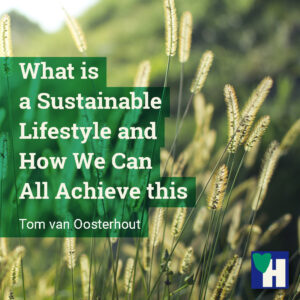
The question of what is a sustainable lifestyle precedes our knowledge of how we can achieve such a lifestyle. We need to agree on some notion of what sustainability is before we can actually make an effort.
Often to our frustration, we’re all aware that the scope of our sustainable actions is limited. However, by taking all individual actions together, we can make a substantial difference.
At the core of this effort is our understanding that moderation is the key to a sustainable lifestyle. Less is more. Being aware of this saves the environment and when we’re lucky also our health, our time, and our money.
There is also a huge difference between a sustainable life and a working life. To live sustainably is a necessity, to work is an opportunity.
This is why we need to try to convince employers and governments that our working life should be adapted to our personal and more sustainable life, and not the other way around.
Every step of the way to a more sustainable lifestyle, we require the support of commercial businesses, politicians, and the government.
Related: How can we Live a Minimalist Lifestyle? Less is More!
Some of the links are affiliate links. As an affiliate associate, we earn a commission when you purchase any of the products offered through the shared links at no extra cost for you. This helps us maintain this website.
Table of contents
What is a sustainable lifestyle?
A sustainable lifestyle is a frugal and moderate lifestyle, aimed at the restoration and conservation of biodiversity, the environment, and our health.
The paradox of framing
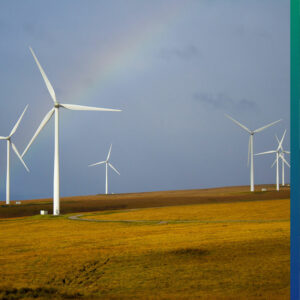
In the Eighties of the last century, the framing of sustainability originally focused on a world in which human behavior served its present needs conserving those of future generations. Such a long-term orientation requires substantial amounts of discipline.
It also requires a substantial amount of creativity and ingenuity. Looking back, our own interpretations of sustainability somewhat reflect these 3 basic principles of discipline, creativity, and ingenuity.
The problem with these principles is that they are rather anthropogenic. This means that they put human concerns at the core of sustainability.
This is probably the most basic paradox of the framing of sustainability: only humans can frame the sustainability in which their concerns do not dominate.
Our more practical, and less anthropogenic, interpretations of sustainability are expressed in the following 2 guidelines we use to achieve a sustainable lifestyle.
Related: Sustainability at Home is Made Utterly Impossible
Triple-P
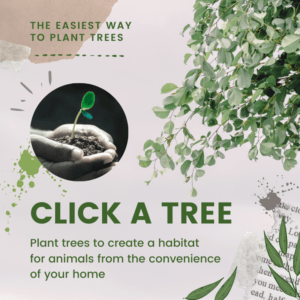
The first and seemingly most simple type of framing of sustainability is that we have to balance the planet against the people who live on it and the economy. For the sake of alliteration, we call the core concern of sustainability: the balance between the planet, people, and profit.
In practice, this Triple-P approach is not that easy to operate. To grasp the significance of the way the planet, the people, and the economy relate to each other, is already an almost insurmountable task.
Where to start? What are the current core concerns? How do they relate? Not just today, but also in the future? How do we judge the outcome of the analysis of the Triple-P relation? And in which direction do we want the balance to tip?
The debate of what is sustainable has been going on for decades. In the meantime, the planet and the people did not prosper. And the economy only for the very few, already exceedingly rich.
Pentad-R, and more

For our daily guidance to a more sustainable personal life, we try to abide by 5 ambitions: refuse, reduce, reuse, recycle and rot. These Pentad-R ambitions guide our decisions.
Later on, we extended the Pentad-R with two more ambitions: repair and rethink. In many countries more and more repair shops exist. Moreover, a growing number of designers and engineers rethink technical solutions from sustainability principles.
This is more necessary because they also are concerned about issues such as animal welfare, environmental pollution, biodiversity, the landscape, fair trade, fossil fuels, human rights, gender and other types of human equality, and labor conditions (child labor and a decent wage).
The biggest challenges with these ambitions are again personal ones. How do the Pentad-R relate to our personal freedom of choice and our self-development? How sustainable are our deepest personal wishes? On the short as well as on the long run?
To do or not do, what is the question?
Many of our sustainability decisions are inspired by the things we shouldn’t do. It is of course an open debate whether it is perhaps better to inspire ourselves and others with the promising perspective of the things we should do.
For Hannie and me, buying and eating organic food is a perfect and very important example of how we want to pursue a more sustainable lifestyle. Organic food supports so many sustainable goals simultaneously, that for us it is the best and most positive choice we can make.
Organic food is good for biodiversity, it is good for the air we breathe and the water we drink, and for the soil, where our food grows. Besides, this all amounts to good health.
We think this sounds better than ”organic agriculture does not use chemical fertilizers, insecticides, pesticides, or fungicides”. Even though this is also very true.
Moreover, too many organic chips and organic cookies can raise our cholesterol to the same unhealthy levels as conventional processed fast food will.
The poverty paradox
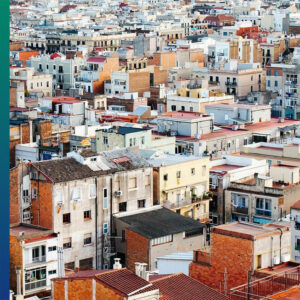
We are convinced that our personal contributions to sustainability are essential. However, how well aware are we that our sustainability ambitions align with the ambitions of the poor people of our planet?
Sustainability goals, such as the required sustainability overhaul of major public and commercial provisions and infrastructures, require some substantial investments.
Poor people are incapable of mustering the money required. Rich people only design sustainability goals that serve their concerns. This is called the sustainability poverty paradox.
Related: Poverty in the world and sustainability, a Tense Relation
Complicated ambitions
When it comes to a sustainable lifestyle, the rich will have to provide for the poor as well. Of course, this is not new. This is how all modern welfare states emerged and exist. Those who are better off invest in those that are less well off. These are age-old traditions.
However, the sustainability poverty paradox gets more complicated, considering that the poor and the rich often rely on the same ecosystems. Fortunately, this also offers a tremendously challenging opportunity: let the well-off pay the poor for the proper maintenance of the ecosystems we all depend upon.
Of course, this means that the rich must first stop exploiting the ecosystems the poor live upon. Which overcomplicates the poverty paradox of sustainability even more. Because the exploitation of ecosystems by the rich, often serves the poor with some kind of livelihood.
Poor people first

Although these poor people’s subsistence plays out at the brink of what can be considered sustainable. Sustainability plans often only serve the rich and ignore the needs and concerns of the poor.
The poverty paradox shows that it’s important to design sustainability plans from the perspective of the poor people’s planet and the poor people’s economic concerns. The poor of the world must also be able to profit from a better world.
Let’s try to put poor people first in our personal sustainable lifestyle as well as in the institutional sustainability plans designed. This is a sure way to genuine sustainability.
Improve the life of the poor, and secure a sustainable planet. How difficult can that be?
The paradox of nutritional guidelines
A sustainable lifestyle integrates personal and collective goals. Goals that serve the planet, biodiversity, the environment, the climate, as well as the concerns we share with others and our personal concerns.
Collective goals are the clean air, soil, and water, we all share. These collective concerns require collective action. In everyday life, these collective actions should primarily be taken by businesses and governments.
Because we all participate in them, as employees as well as consumers, we should apply our influence to change businesses and governments to more sustainable actions.
This, however, does not absolve us from taking action in our personal lives. To moderate our food intake is one of the most visible ways to contribute to a sustainable lifestyle.
Related: Nutritional guidelines with a sustainable focus.
Moderate food intake
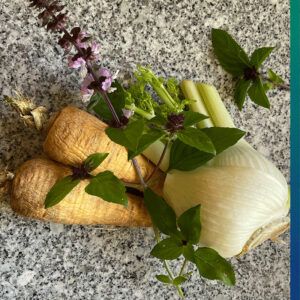
Many of us are well aware of the personal struggle to moderate our food intake because we have to control our body weight. However, a moderate food intake also serves sustainability goals.
Nutritional guidelines can support the goal of a moderate food intake. The paradox of these guidelines is, however, that they often do not call for moderation.
Our modern lifestyle does not require a huge amount of food. It requires a varied but small amount of, mainly fresh, food.
The rules of thumb we use to moderate our food intake, are:
- Small plates and forks, knives and spoons;
- 2 different vegetables;
- Take time to chew our food properly;
- No TV, radio or phone, or any other modern device distracting us during meals.
Moderate meat consumption

Most nutritional guidelines do not include sustainability claims. They primarily focus on our health. However, this is a short-sighted concept of our health. This may be concluded from the obesity pandemic here in Spain.
Fortunately, most of the nutritional guidelines suggest plant-based nutrition at the core of our food intake. This is more sustainable. Whereas meat has a tremendously high negative environmental impact.
We hardly eat any meat or fish. Only once or twice a week and never more than 100 to 150 grams per person. There are also some other actions we take to enhance a more sustainable food intake:
- Only organic chicken or turkey or fish;
- Fresh and seasonal fruits and vegetables as much as possible (this also reduces the use of plastic);
- Prefer carrots and tubers and turnips over salads;
- Local fruits and vegetables;
- Alternate raw foods with cooked versions;
- Never overcook our food or use much water or oil.
Moderate food costs
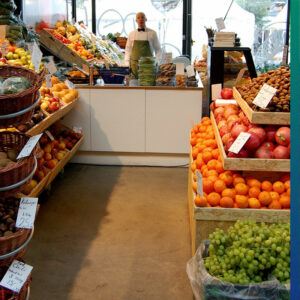
We buy organic food. This is better for biodiversity and the environment. That it’s also good for our health is a bonus.
When it comes to buying organic food the most common comment we get is that it’s too expensive. In my youth, when I lived at home we ate 3 meals a day and each meal with meat.
Translate this habit to organic, and to Spain where it’s common to eat 5 times a day with meat, the food costs will burn a substantial hole in our wallets.
However, when our food intake is moderated to non-obesity standards, the total costs of organic food are as high as with conventional food.
Moreover, the costs of the damage of conventional foods to biodiversity, the environment, and our health, are never incorporated into the price people pay. These costs are transferred to the taxes and prices we have to pay for public health care services.
And these costs are transferred to future generations as the taxes and prices they have to pay for clean air, clean water, and healthy food.
Related: How do we Personally Try to have a Sustainable Lifestyle?
How much are you prepared to pay for a sustainable lifestyle? Please tell us in the comment box below.

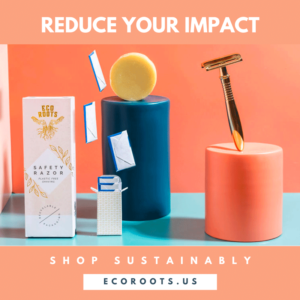
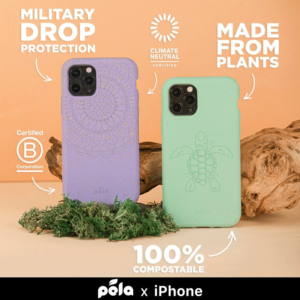
People tend to complain that healthy/organic food is expensive but they see no problem in spending tens of dollars on prime cuts that they end up eating in one sitting. If we have a balanced diet, with little to no meat and the occasional fish we won’t be spending that much to begin with.
Hi Harper,
I didn’t know what prime cuts are. So I looked it up in a dictionary. It is meat. Beef to be exact. The last time I ate a piece of beef was 40 years ago. Steak Stroganoff. Never missed it.
There is no good reason for humans to eat the amount of meat they do. Let’s stop this unsustainable way of living. It’s extremely bad for the environment. It ruins the economy. And it maintains hunger and poverty in the world.
Moreover, we want all food to change to organic.
Thank you for your comment.
Regards,
Tom